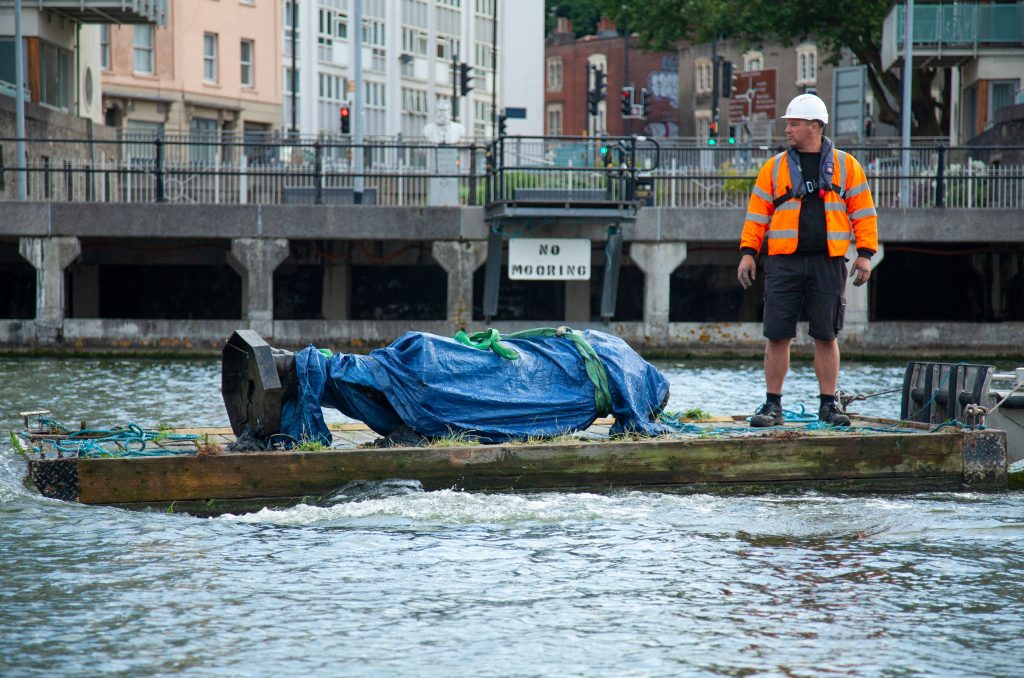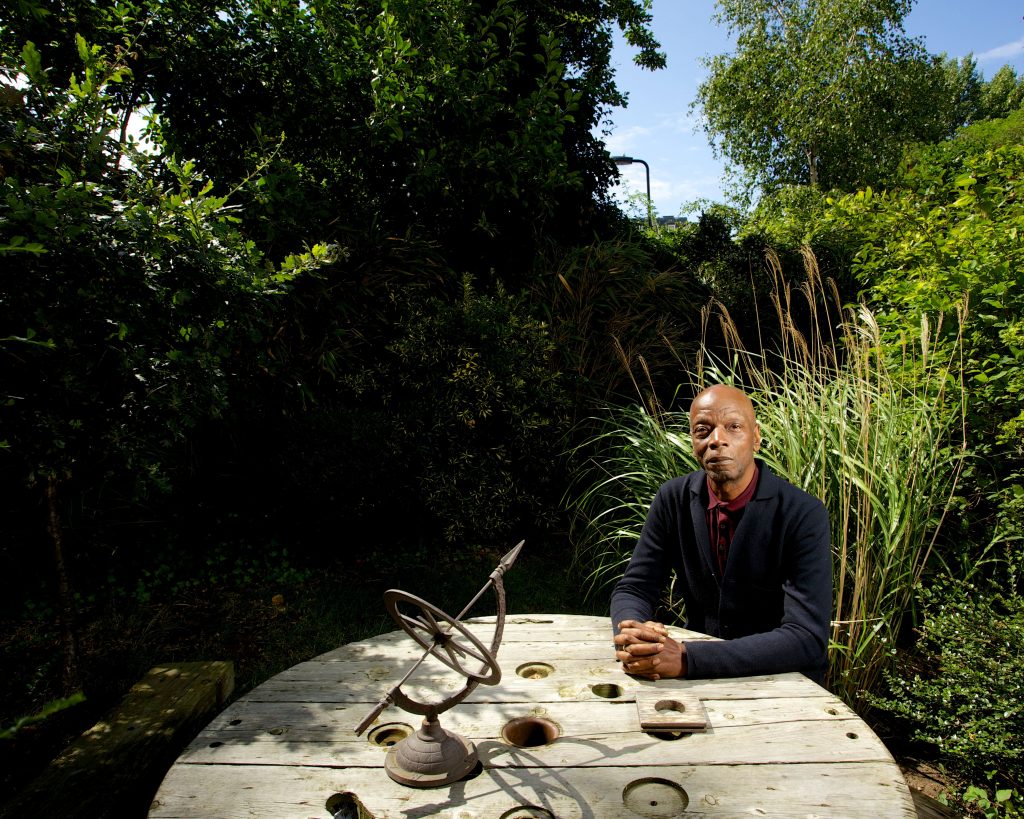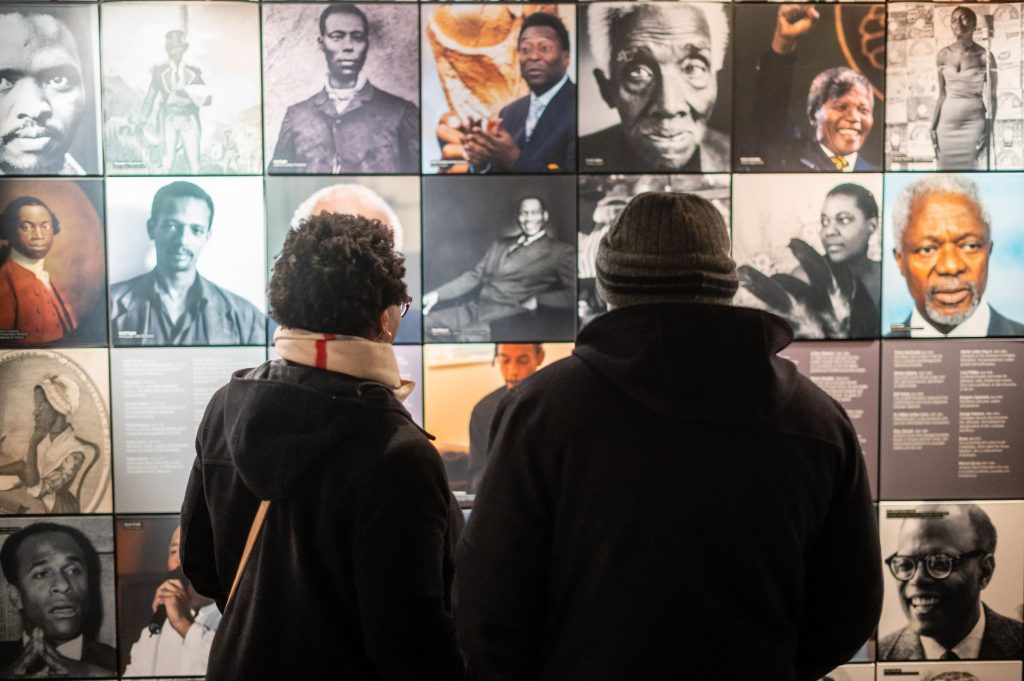Black Lives Matter: one year on

On 25 May 2020, George Floyd, a Black man from Minneapolis, was killed by a police officer during arrest. Footage of his death spread around the globe, reigniting the Black Lives Matter (BLM) movement and leading to a wave of protests against racial injustice and inequality.
In the heritage sector, the groundswell of activism forced institutions to confront their own historic complicity in racism and oppression. Many organisations expressed their solidarity and vowed to take urgent action. A statement signed by the Museums Association and other heritage bodies acknowledged that “our nation’s history and heritage is an invaluable tool in the fight against racism and discrimination”.
A week after Floyd’s death, BLM protestors threw a statue of 18th-century slave-trader Edward Colston into Bristol harbour. Heritage was thrust into the discourse and became the focal point of an intense backlash from media and government figures, who used the toppling of the statue to stir up a so-called culture war that reframed attempts to grapple with Britain’s role in slavery and colonialism as “erasing history”. This has led to plans to create national guidance for the heritage sector on the government’s retain and explain policy, and concerns among museum professionals about political interference in their work.

The March publication of a UK Government-backed report on race, which claimed to find little evidence of structural racism in the UK, intensified hurt and anger among Black communities, with Black Cultural Archives resigning from the Home Office’s Windrush working group in protest.
The momentous events of the past 12 months will have a lasting impact, but given the force of the pushback, are we any closer to meeting the commitments made a year ago to “ending racism in the heritage sector”?
“A contradiction has opened up over the past year,” says Errol Francis, the director of the arts and heritage diversity charity Culture&, who led the development of a Black Lives Matter Charter for the sector last year.
“On one hand, I’ve never seen such a groundswell of recognition from people for this work in the sector,” he says. “People are really trying to address these issues.”

Francis has been approached by a range of arts and culture organisations in the past year – from funders and independent charities to government bodies – to move forward their work on improving diversity and tackling structural racism. “That’s been positive and shows that the movement has had an impact,” he says. “Even one year on, you can still feel the energy that was created.”
But on the other hand, there has been a “release of toxic energy” pushing back against this progress, he says.
“The backlash wasn’t entirely unexpected but the nature of it was,” says Francis. “The use of the branch of the executive to deal with it, with a lot of force being brought to bear on institutional practice – that’s what I find most disturbing.”
Widespread dismay
There is widespread dismay that the government has “raised the temperature” on what had been a sensitive, multi-layered and constructive debate, he says. “The government has drawn battle lines and made the conflict much sharper. Instead of an intelligent and nuanced conversation, it has recast something that was very subtle into being crude.”
Arike Oke, director, Black Cultural Archives
The killing of George Floyd and the resulting summer of activism and demands for racial inequity to be recognised and addressed was traumatising and empowering for the Black Cultural Archives (BCA). Reeling from the effects of lockdown on our charity, suddenly we were also dealing with the emotional weight of seeing the fatal consequences of racism.
As all BCA staff have suffered racism at various levels, this hit home. But we weren’t expecting all eyes to be on us to help explain and map a route of the established trammel lines of inequality to both the wider heritage sector and to corporates. We charged corporates to hear our views, and embraced being able to use our platform to influence sector conversations. In this way, we hope to make lemonade from the bitter lemons of 2020.
From this year, we will be able to measure any change inspired by the BLM summer, building on the fervent momentum. The BCA is excited to provide a narrative bridge, from contemporary BLM activism to 1980s activism, with a season of events marking 40 years since the 1981 uprisings.
Antonia Canal, the policy and campaigns officer at the Museums Association (MA) and a member of the MA’s Decolonisation Working Group, echoes this view.
“I expected some reactive grandstanding, but I’ve been surprised by the way it is now filtering into policy decisions and undermining the arm’s-length principle,” she says.
The intense rhetoric on the issue has taken an emotional toll, says Canal. “Everything has become so confrontational and toxic around this work – it weighs down on the people who have been doing it for a long time.”
There are real fears that this government heavy-handedness – exacerbated by financial pressures on the sector caused by Covid-19 – could have a chilling effect. Museums Journal understands that funders, and those developing projects, are treading more carefully with the language they use, avoiding terms such as “decolonisation”.
But Francis is hopeful. “I don’t take the negativity as the dominant message – it’s just a message of panic,” he says. “People from all over the world are engaging in these passionate conversations in spite of the government. There’s this huge force happening that the government can’t shield themselves from forever.”
He believes that those who have politicised the issue fail to see the potential of heritage to be “restorative”. Witnessing collective grief and trauma acknowledged in institutional spaces can have a powerful healing effect, says Francis. “We need to have a restorative process and museums can be part of that. It actually creates a sense of belonging.”

Disproportionately hit
Government interference is not the only obstacle to change. People of colour are sorely underrepresented in the museum workforce and have been disproportionately hit by the more-than 4,000 redundancies that have taken place in the UK sector since the start of the pandemic.
Diversifying the workforce at every level will be a priority if museums want to live up to the commitments they made in 2020. This September, Culture& will launch a postgraduate course with the University of Leicester, to focus on nurturing a more diverse sector. “It won’t happen this year or next, but the energy and compassion coming from the sector will take us a long way,” says Francis.
Ultimately, museums need to have the courage and vision to see beyond the current difficulties, says Canal. “It comes back to whether organisations are doing the work in a long-term way and empowering their staff to make changes,” she says. “It’s a test for institutions.”
The Museums Association and Culture& are hosting a joint UK-US symposium reflecting on how museums are responding to racism. Museums and Black Lives Still Matter takes place on 2 June
What actions have museums taken in the past 12 months to combat racism?
National Museums Liverpool
- Created a Black Lives Matter Task Force.
- Appointed a historian in residence to help the organisation self-evaluate and become more transparent in its interpretation work.
- Committed to developing the International Slavery Museum as the leading voice for telling stories of the transatlantic slave trade and its legacies.
- Intensifying its efforts to improve inclusivity and representation in all of its work.
Science Museum Group
- Developed an Inclusive Display and Interpretation Action Plan as part of its commitment to working in a more inclusive way in its approach to collecting and curation.
- Increased its focus on growing a more diverse workforce and inclusive culture, including an employee diversity monitoring refresh.
Glasgow Life
- Created Scotland’s first dedicated job role focused on the legacies of slavery and empire with the appointment of Miles Greenwood in September 2020.
- Worked with Museums Galleries Scotland to launch a national consultation exploring how museums can better represent the country’s colonial and slavery history.
Imperial War Museums
- Implemented new collecting strategies that aim to diversify and broaden the stories it tells.
- Made significant changes to its online recruitment platform and candidate-shortlisting process to ensure that recruitment is fair.
- Implemented access and inclusion training for all staff and launched a network of Access and Inclusion Champions.
Amgueddfa Cymru – National Museum Wales
- Launched Reframing Picton, a project inviting Black artists to help reframe the colonial narrative around the portrait of lieutenant-general Thomas Picton.
- Published a new digital arts magazine, Cynfas, whose first issue focused on celebrating Black people and their contributions to art within the museum’s collections.
- Launched Lates: Pitch Black, an online arts festival celebrating Black artists, complementing the Artes Mundi exhibition.
Comments (1)
Leave a comment
You must be signed in to post a comment.

I feel very privileged to live in Liverpool where so much work is happening to ensure the museums and galleries here recognise their duty to represent and tell the stories of all our communities, especially black, brown and South East Asian communities who have histories that have not always been told. I think the sincerity behind this work is evident and the appointment of Michelle Charters as Head of the International Slavery Museum here is a step change – she’s an activist who has made life in the city better for many years and will bring a truly inspiring leadership not just for the Museum itself but across our sector.